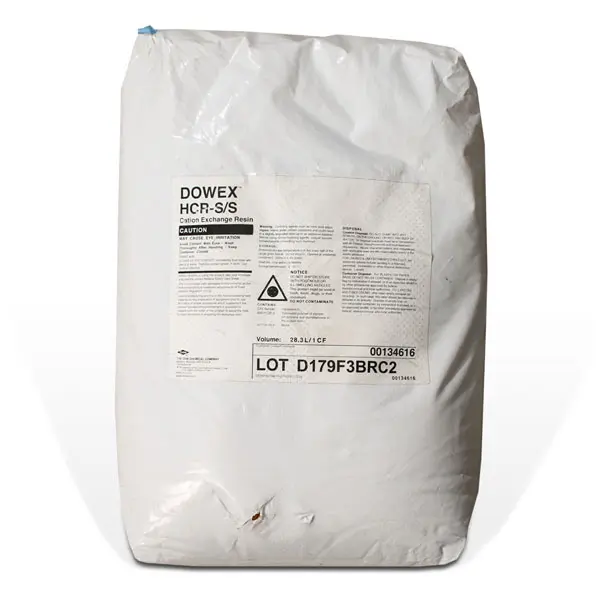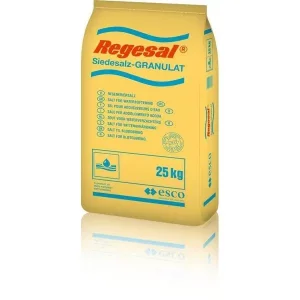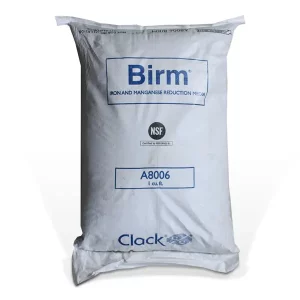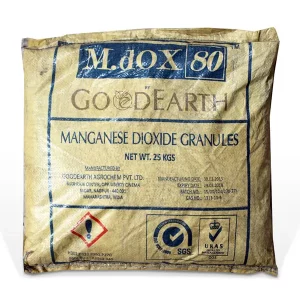About the media
Katijonitas vandens minkštinimui Dowex yra gelio tipo, stipriai rūgštinė katijonų mainų derva, skirta naudoti buitinėse, komercinėse ir pramoninėse vandens minkštinimo sistemose. Derva pasižymi dideliu jonų mainų pajėgumu, užtikrinančiu puikias kinetines savybes. Ji pasižymi geru fiziniu, cheminiu ir terminiu stabilumu.
Operating principle
Vandens minkštinimas – tai cheminis procesas, kai kalcio ir magnio jonai (jie sukuria vandens kietumą) jonų mainų būdu būna pašalinami iš tiekiamo vandens . Šio proceso metu kietas vanduo teka pro vandens minkštimo filtro dervų sluoksnį, kuriame kalcio ir magnio jonai yra pakeičiami natrio jonais. Kietam vandeniui tekant per rutuliukus (minkštinimo užpildą), kietumo jonai prilimpa prie jų (dervos), o vietoj jų išsiskiria natrio jonai. Todėl nuo minkštinto vandens nebesikaupia apnašos (kalkės), jo paliekamas apnašas yra žymiai lengviau valyti! Laikui bėgant (tiksliau vandeniui tekant) katijonitas vandens minkštinimui Dowex prisisotina kalcio ir magnio, todėl ją reikia regeneruoti koncentruotu druskos tirpalu, kuris atpalaiduoja sukauptas medžiagas nuo vandens filtro užpildo, kurios regeneration metu būna pašalinamos į kanalizaciją. Šis metodas užtikrina nuolatinį minkšto vandens tiekimą, sumažindamas įprastas problemas, susijusias su kietu vandeniu tiek gyvenamosiose, tiek pramoninėse patalpose.
Use
Atliekant atbulinį atsiplovimą, dervos sluoksnis išsiplečia 50-70 % tūrio bent 10-15 minučių. Tuo metu užpildas būna „atkedenamas”, kad būtų užtikrintas geresnis druskos tirpalo įsisavinimas atsiplovimo metu. Todėl santykis tarp užpildo kiekio ir vandens filtro kolonos, į kurią bus pilamas užpildas, yra itin svarbus, nes katijonitas vandens minkštinimui Dowex turi turėti erdvės “plėstis” kolonoje atsiplovimo metu. Teisingas užpildo kiekio ir filtravimo kolonos santykis leis užtikrinti patikimą ir ilgą eksplotacijos laiką. Tuomet prasideda svarbiausia operation – druskos traukimas. Koncentruotas druskos tirpalas būna lašinamas ant užpildo. Tirpalas, tekėdamas per užpildą, „paleidžia” savyje sukauptas kalcio ir magnio priemaišas ir šalina jas į kanalizaciją. Likusių operacijų metu užpildas vėl yra „kedenamas” ir suspaudžiamas, kad neliktų druskos pėdsakų. Svarbu paminėti, druska į sistema nepatenka ir jos pėdsakų nejausite. Užpildo atsiplovimo metu amerikietiški filtrai tiekia vandenį atidarę vidinę apėjimo liniją (kinų gamybos filtrai dažnai visiškai uždaro vandenį ir name jo nelieka) tam, jog druska nepatektų į sistemą.
Advantages and disadvantages
Vandens minkštinimo užpildas turi keletą privalumų. Pavyzdžiui, vamzdžiuose ir prietaisuose nesikaupia apnašos, o tai gali prailginti jų tarnavimo laiką ir padidinti efektyvumą (elektriniai boileriai). Minkštintas vanduo sumažina muilo ir ploviklių reikiamą kiekį, todėl indai, skalbiniai ir oda tampa švaresni. Tačiau reikia atsižvelgti ir į trūkumus. Jonų mainų proceso metu vanduo prisisotina natriu. Dėl to esant labai dideliam šalinamų kalkių kiekiui vandenyje, natrio koncentracija gali pakilti virš higienos normų leistinos ribos. Tokio vandens nerekomenduojama gerti. Kitas dalykas yra priežiūra. Tam, kad vandens minkštinimo įrenginys veiktų tvarkingai, reikės nuolatinio vandens filtrų salt papildymo. Jos suvartojimas priklausys nuo realių sunaudotų vandens kiekių. Pavyzdžiui, vienos pakuotės 25kg druskos, grubiai užtenka 25m3 vandens, kai įtekančiame vandeny bendrasis kietumas siekia 10mg-ekv/ltr. Jei vandenyje bendras kietumo rodiklis yra 6mg-ekv/ltr, tuomet druskos pakuotės užtenka 35m3. Kadangi druskos sąnaudos priklauso ir nuo vandens suvartojimo, todėl sunaudojus mažiau vandens druską reiks pilti rečiau. Ir priešingai, sunaudojant daugiau – dažniau. Nepaisant šių trūkumų, daugelis mano, kad sumažėjusios priežiūros ir mažesni kiekiai chemijos skalbimo, indų ar rankų plovimo metu ir pagerėjusi vandens kokybė nusveria šiuos galimus trūkumus.





Reviews
There are no reviews yet.